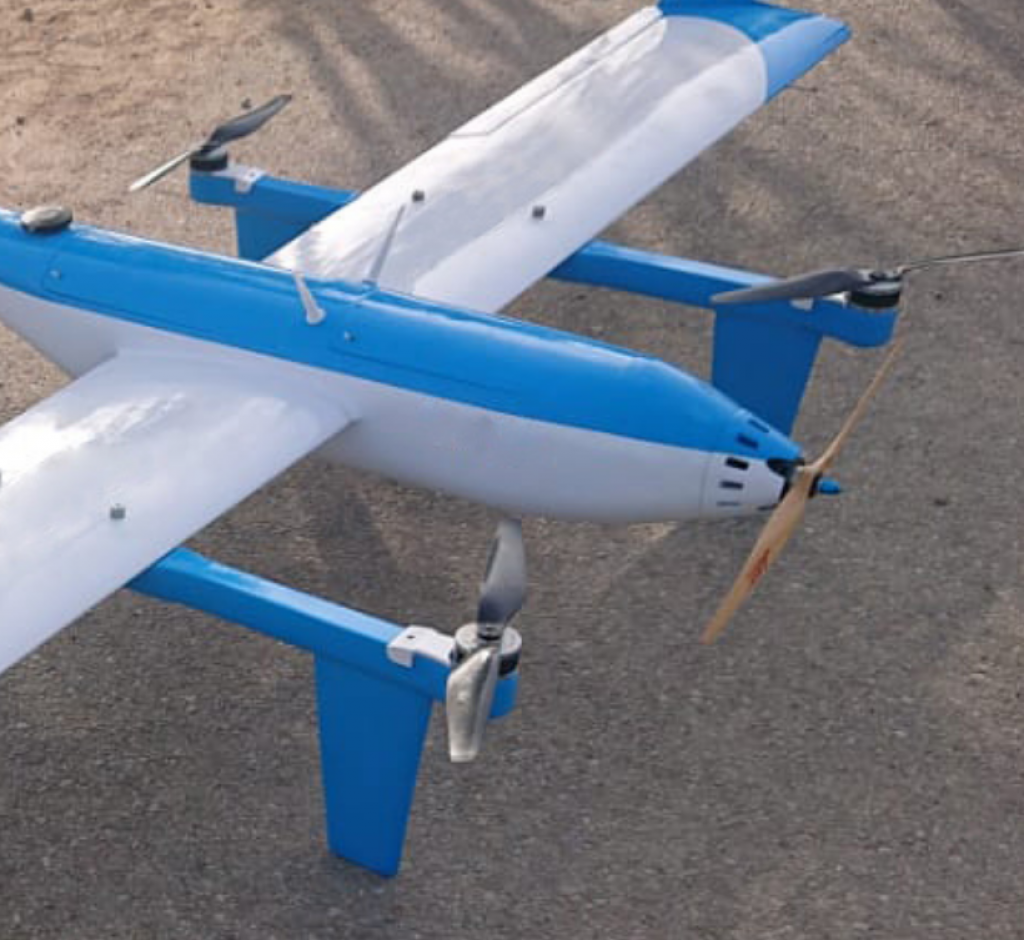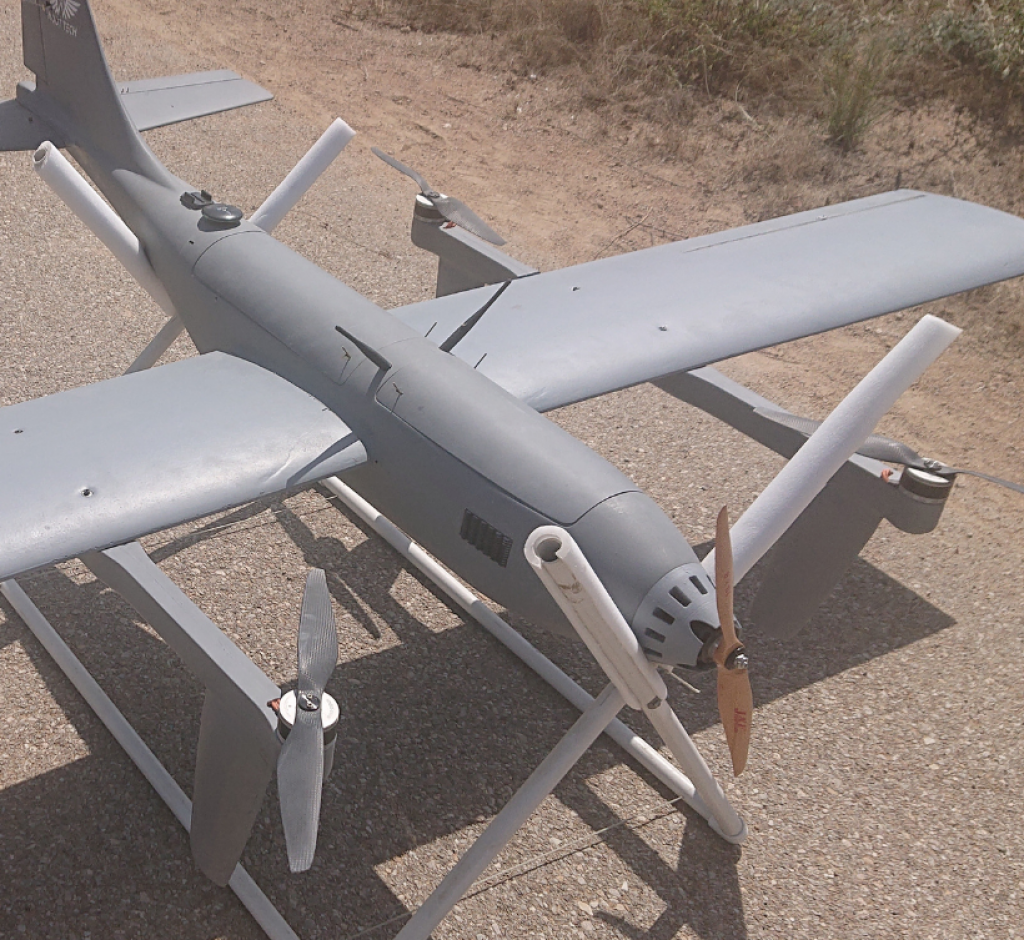Lab Drone
Drone Laboratory
Dronepoulis ESA-90 is a fixed wing drone with advanced design features.
Technical Specifications
- Fixed wing electric Vertical Take Off and Landing (eVTOL) drone
- Capable of outdoor flights
- Capable to taking-off and landing vertically while flying horizontally
- Four (4) independent motor-propellers for Vertical take-off and Landing
- One (1) high speed motor-propeller for forward /horizontal flight.
- Great endurance and great stability in high, turbulent winds
- Specifically designed for long-endurance stable flight
- Extensively used for mapping and surveying
- Capable of covering 8 km² in a single flight
- Flight time (endurance) of up to 90 minutes
- Can also be used for live video surveillance and monitoring of infrastructure
- Various payloads can be seamlessly integrated and used with this drone
- 61 MP Sony high resolution visual camera
- Multispectral cameras (EO 1080p 30x zoom, TiR 640x512)
- EO/IR and thermal cameras
- Lidar
Specifications
- Endurance – up to 90 min
- Speed – 65 km/h
- Radio link range – 40 km
- Video transmission range – up to 30 km
- Max flight range – 100 km
- Max payload weight – up to 2 kg
- Altitude – 1500 m AGL
Take-off and Landing Requirements
- Autonomous vertical take-off using vertical lift motor-propellers
- Autonomous landing using vertical lift motor-propellers on fixed undercarriage
Operational conditions
- Wind gusts: up to 25 km/hr
- Operational temperature: from -10°С to +65°С
Payload options
- 42/61 MP Sony full frame photogrammetry camera
- EO/IR and thermal camera
- Multispectral camera
- Lidar
- Other types of payload can also be integrated
Lab Equipment Experimental Features
Dronepoulis ESA-90 is a fixed wing drone with advanced As an equipment, it can be used to demonstrate the students and researchers, variety of tasks. This lab equipment comes with design features.
- App for changing controller gains and settings to experiment with effect of control system variation on performance of the drone
- Flight simulator for training and mission planning, flight assessment of the drone
- Three (3) different types of motors to experiment with different payload configurations
- Three (3) different types of propellers to experiment and simulate the optimal thrust configuration




